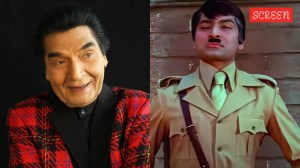We Can(nes) do it. Or can we?
It’s that time of the year when a few handpicked information and broadcasting ministry officials and the minister pack their bags to in...

It’s that time of the year when a few handpicked information and broadcasting ministry officials and the minister pack their bags to indulge in what has been described as an annual orgy of Hollywood glitz and showbiz excess where a mind-numbing array of films compete for awards and attention.
Indian films, did you say? Well, in its 58th year, Cannes opened its doors just a little wide to Satyajit Ray’s 50-year old classic Pather Panchali, but firmly shut out other Indian films that were found to be below par.
Pather Panchali remains a big draw as was evident in the decision of the organisers to choose it as the inaugural draw. It is also perhaps the only Indian film to have a bagged an award. But to ensure that the film was not forgotten, a handful of individuals worked hard to reserve a berth in the classic cinema section. That is what Cannes is all about, where every filmmaker wants to create a buzz around his films just as every starlet ensures she is talked about at least once. Cannes is about grit and determination, under the Hollywood froth.
But of the country that prides itself on producing more than 800 films every year, very little can be written about its participation, save for three Indian women on different missions. One flew in as a L’Oreal ambassador to declare the festival open, the other as a jury member and the third for her role as an exotic Indian princess in a Jackie Chan film. With the exception of jury member Nandita Das, who was concerned about the non-inclusion of Indian films from the greatest spectacle on earth, the other two were just happy and honoured to be part of Cannes.
In this part of the world, like a worn-out script, the story is the same. With the exception of half a dozen films in the last 50 years, Indian participation, forget competition, has been zilch. So where are the Mukta Arts and Yash Raj banners? Three years ago, the former Information and Broadcasting Minister Sushma Swaraj valiantly tried to show a Raj Kapoor retro at Cannes, with little success.
Countries which produce a fraction of 800 films get talked about at Cannes; experimental cinema gets attention. This year’s flavour seems to be Iraq, with an Iraqi film having made it to the competition section. Practically everyone would have told his story by May 22 when the festival nears an end, except us.
Why doesn’t India’s exclusion from the world’s glitziest stage bother us anymore? And how will a government delegation — riding on the back of taxpayers’ money — help settle matters?
Well, officials will have you know that Cannes is all about being seen and heard. In other words, it is a market where films are hawked and deals struck. By a strange coincidence even in the market, Ray salvaged India’s reputation as a film-making country when his Apu trilogy was sold for a little less than a million dollars two years ago.
Chances are the ministerial delegation will hardly be noticed in a crowd peopled by stars and film directors vying for attention. Cannes can be cruel. To think of the information minister of France inaugurating the Cannes Film Festival would be laughable. It’s only in India that the government makes a song and dance at festivals it organises once in two years.
Cannes is no place for government officials but private enterprise and grit and attitude. Not surprisingly, both business chambers FICCI and the CII are sending a delegation of filmmakers to Cannes. It is time to check out whether they have made a mark. In the last five years, there has been no great news of filmmakers from the sub-continent cutting deals with their European counterparts.
Forget the Palme d’Or, how about exploiting markets without government help? And how about participating in the non-competitive section at Cannes?
For all its glitz, Cannes is serious business. Let it not be the most glamorous date on the official calendar. Let it not be just the annual sojourn to cooler climes.





- 01
- 02
- 03
- 04
- 05


























